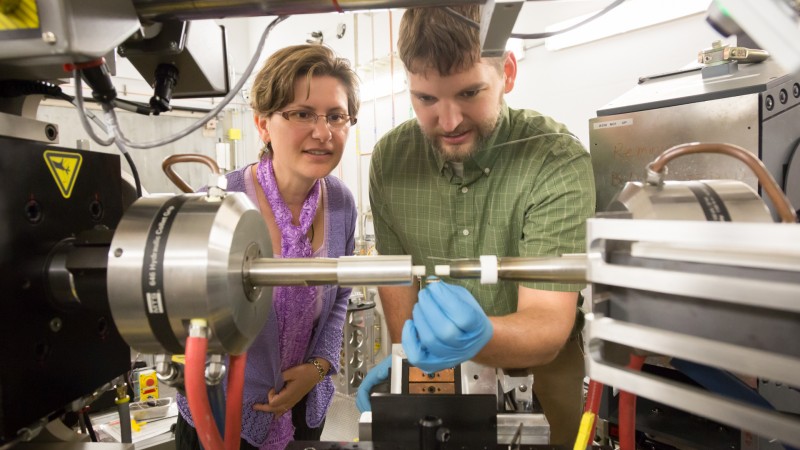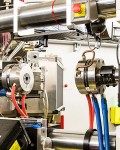The neutron diffraction technique is a non-destructive way of looking deep inside of materials, literally to the atomic level. A team of researchers is using neutron diffraction at ORNL to understand the fundamental science of thermo-mechanical deformation of uranium.
“We are looking at the effects of aging on uranium,” said Dr. Elena Garlea, lead scientist from the Y-12 National Security Complex. “As uranium ages, its properties change, so we want to understand the evolution in mechanical behavior and microstructure as it pertains directly to uranium processing for nuclear energy industry and Mo-99 medical isotope production.”
The team is making measurements at VULCAN, SNS beam line 7, including the application of tension and compression loading to the uranium sample at different temperatures. They are coupling the experimental data collected here with polycrystalline and finite element modeling to learn about the grain level mechanisms of deformation and correlate that with macroscopic properties.
“Due to its high anisotropy, alpha uranium poses a great challenge to the fundamental understanding of crystal plasticity,” said Chris Calhoun, a PhD candidate from the University of Virginia. By studying a complex material like uranium, we gain insights into less complicated metals, like aluminum.
This project is funded through the Y-12 Plant Directed Research and Development program and had been developed in collaboration with Prof. Sean Agnew at University of Virginia as part of Calhoun’s PhD dissertation.





